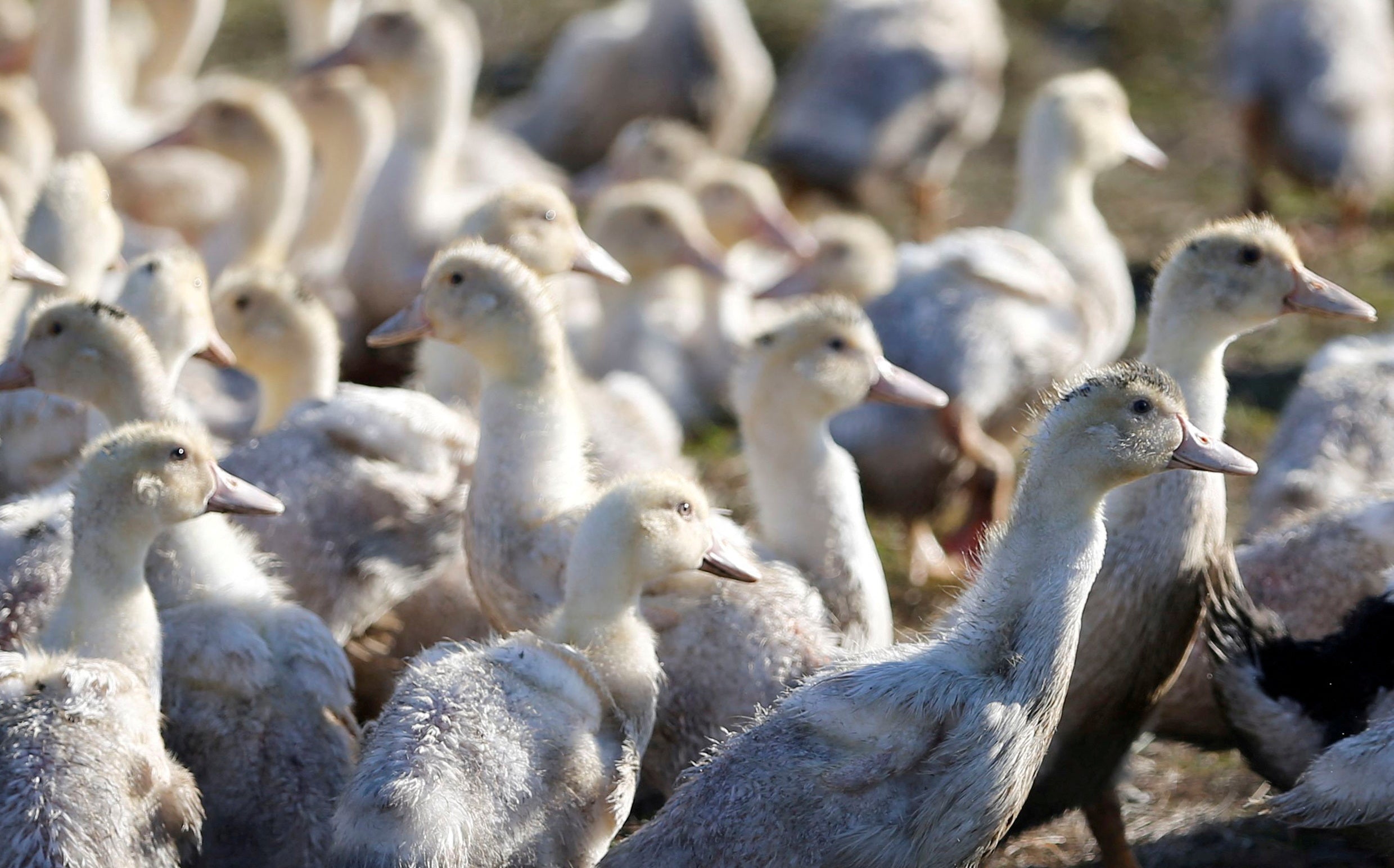The Independent's journalism is supported by our readers. When you purchase through links on our site, we may earn commission.
Experts say bird flu is more widespread than we think: ‘We are in a soup of virus’
“We are in a soup of virus. I mean, there’s virus everywhere around us at this point,” one scientist said
Scientists are warning about the continued transmission of dangerous H5N1 bird flu, saying that the virus is more widespread than believed.
“We are in a soup of virus. I mean, there’s virus everywhere around us at this point,” Dr. Marcela Uhart, a wildlife veterinarian with the University of Cal-Davis’ One Health Institute, told a symposium earlier this month. “This virus is circulating left and right in mammals and in birds, as far as we can tell, some of them are not showing any signs of disease.”
Human infections have been reported across seven US states, and the total number has steadily risen over the last couple of months. Now, there are 55 confirmed cases, according to the Centers for Disease Control and Prevention. The majority of those cases are in California, Colorado and Washington.
Most people who were infected work at dairy and poultry farms, but the CDC also announced the nation’s first case in a child was reported in California. It was unclear how the child became infected. The patient, who was not identified, had mild illness, while a teenager in British Columbia, Canada, who was sickened, remains in critical condition.
Over the weekend, California health officials said a farm had recalled raw milk after a retail sample from a dairy in Fresno tested positive for bird flu. There were no related illnesses reported. Bird flu has ravaged California’s dairy industry, infecting 650 herds in 15 states. There are dozens more California positives in the Department of Agriculture’s testing pipeline. Egg prices have increased after the slaughter of millions of poultry birds, including more than 6 million this month. The US egg-laying flock is down about 3 percent over the past year, according to the department.

The risk to the American public, the CDC says, remains low. Although, the agency has also advised farmworkers to wear protective gear to prevent against the spread. The virus can impact workers who inhale infected particles, pick up germs from sick animals and other surfaces and then touch their faces and eyes and those who drink raw milk.
But, there is little to suggest guidance from health authorities is being heeded, according to a new report from The Los Angeles Times. The publication said nearly all conditions needed for the virus to develop a threatening mutation are now present at dairy farms, and cited family members of workers who displayed bird flu symptoms but kept working in fear of losing their jobs.
“Some of them are here not legally. They’re relying on that job, they don’t want to jeopardize that,” Anthony, a Tipton resident, said. Anthony did not want to share his last name with the paper.
There is evidence this virus is swapping genes. Wild birds carry a variant of H5N1 called D1.1 or D1.2. The virus that infected the Canadian teenager was found to be closely related to those circulating in local poultry, belonging to the D.1.1 variant.

Dr. David Kessler, the Biden administration’s chief science officer during the height of the Covid pandemic, stressed in an op-ed published Tuesday in The New York Times that the Trump administration must be prepared for the possibility that bird flu might mutate to enable human-to-human transmission.
“I have been monitoring the spread of bird flu, also known as H5N1, and discussing the situation with colleagues around the country. My concern is growing,” he wrote, noting that there are likely others human cases in the US that have not been diagnosed.
Kessler said the virus in the teenager had shown signs it mutated in a way that could make it easier to transmit to another person, warning that H5N1 becomes deadly when the virus attaches to the lining of the lungs. Of the cases reported in the Western Pacific Region from January 2003 through this past September, the World Health Organization says there was a fatality rate of 54 percent.
“No one knows how many mutations will be required to set off human-to-human respiratory spread. That could require many mutations and may never happen. But we could also be just two or three mutations away. If the virus begins to transmit efficiently among humans, it will be very difficult to contain, according to [a] Johns Hopkins assessment, and ‘the likelihood of a pandemic is very high,’” he cautioned.
“The incoming Trump administration needs to be prepared.”
Dr. Mandy Cohen, the director of the CDC, told The Associated Press on Monday that she does not believe the U.S. is at a “turning place” yet.
“But does that mean it couldn’t change tomorrow? It could,” she said.
With reporting from The Associated Press
Join our commenting forum
Join thought-provoking conversations, follow other Independent readers and see their replies
Comments
Bookmark popover
Removed from bookmarks